It’s that time of year when a lot of backcountry anglers are about to hang up the 3-weight and start their annual downhill migration, where bigger water is flowing slower and bigger fish are enjoying the respite from summertime pressure.
But, as any die-hard brook trout angler in the West might tell you, “Not so fast, Habibi.”
Brook trout are fall spawners, meaning that the “char rut” is under way in the Rockies. These transplanted, yet wild fish are more aggressive during September and October than they are at any other time of the year. That may be hard to believe, given the zest brookies possess at all times, but it’s the truth.
On many high-elevation streams from New Mexico to Montana, brookies of all sizes (and this is a relative determination, given the generally diminutive length of these invasive fish from Appalachia) come together and start bullying each other in preparation for the spawn.
Certainly, brook trout will still hit well-placed dry flies. It’s just in their DNA—brookies are the opportunists of the salmonid universe. But this is the best time of the year to literally change directions and start chasing brook trout with small nymphs and streamers fished downstream and on the swing.
Why? There are several reasons this method works better in the fall, during the run-up to the spawn, than it does at any other time of the year.
First, brookies are aggressive leading up to the spawn. They are more likely to instinctively lash out at anything that approaches them, even a small nymph or an undersized streamer. Brookies, ounce for ounce, possess one of the shortest tempers of any trout or char.
Second, brook trout don’t seem to lose their food-first perspective, even leading up to the spawn (some trout will go days without eating as they gear up to mate). Their very nature makes it tough for them to pass up a meal and, I think, as they ready for the spawn, when they need every iota of energy to pair up and get busy, they’re even more tuned in to feeding.
Finally, pre-spawn brook trout will concentrate around areas in rivers and streams where the redd-building habitat is ideal. This creates more competition among the fish for food and increases the likelihood for aggression toward each other, and toward interloping flies that might imitate something that either looks like food or looks like a threat.
What’s ideal habitat? Look for areas in rivers and streams that offer a good mix of stream-bottom substrate — gravel mixed in with small rocks. This is where pre-spawn fish will stage, and often, you can see them as they jockey for the best spots.
One important note: in areas of the country where brookies are native, I would advise against chasing these fish in the weeks leading up to the spawn. In their native range, brook trout are a fragile resource with a host of environmental factors—ranging from habitat degradation to climate change—working against them. The last thing these fish need is more anglers trying to pick them off as they get ready to make the next important generation of fish.
The flies
I get that, with a few notable exceptions, brook trout are fairly small — a foot-long fish from a small Western stream is a legitimate trophy. But that doesn’t mean they won’t chase streamers or even nymphs fished on the swing. As anglers, we should do what brook trout in the West have done for more than a century: adapt.
Brookies in western streams tend to take over their adopted watersheds and then, over time, they overpopulate and eventually stunt — in some stunning western streams, brookies are the bulk of the biomass, and an adult spawning fish might be only six inches long. So, armed with this information, it makes sense for us, as anglers, to downsize the patterns we might normally fish on the swing.
A size 4 Zonker should become a size 10 Zonker. A size 12 Prince might become a size 14 Copper John. Tie smaller.
Consider adding some color and some materials that might move water a bit better or garner more attention. Instead of that drab olive Woolly Bugger, tie a gaudy size 12 Egg-sucking Leech with a bright pink bead for a head. Add some thin rubber legs to a chartreuse size 10 Slumpbuster. Add those same rubber legs to a size 14 bead-head Hare’s Ear. It’s a great opportunity to be creative at the vise.
The method
This isn’t rocket surgery. The traditional swing is ideal, particularly if you can put a fly in front of multiple fish. One note here: fishing for brookies as they’re actually spawning … well, yes, they’re invasive in every western watershed they inhabit. But angling ethics being what they are, it’s probably best to follow your gut and leave them be.
But, as fish stage for the spawn? Take a swing. Cast at a slight downstream angle and let the fly unfold above likely holding water (and, in many cases, you’ll be able to see the fish you’re after, adding to the appeal of this method). It’s no different than chasing big browns as they prepare to spawn, or spring-run rainbows or cutthroats. Just be smart and thoughtful — casting to fish in the throes of spawning is a sporting faux pas.
Swinging flies is a blast. Swinging small flies on light fly tackle in small water is even more fun, because it’s intimate and visual. There’s no need to upsize your fly rod — most 3-weights can handle a slightly heavier fly, so long as the weight is proportional to the hook size.
Find the fish and swing away.
Final word
I get that the bigger water is calling. The post-summer crowds are gone. Hunters are hunting. As anglers, we have “seasons,” and fall is a great time for backcountry anglers to come out of the mountains and walk-and-wade for big trout. But, for a few more precious weeks, the high country is still a great place to chase fish, particularly if you’re a fan of brook trout. Slight adaptations to your technique and fly patterns can result in some of the best brookie fishing of the year. You just need to be in the right place to enjoy it.




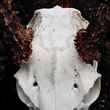















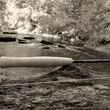
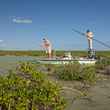



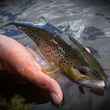
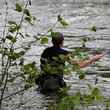

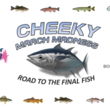
Comments
Hexmeister replied on Permalink
Try adding a size 18 soft hackle as a dropper. You won't regret it.
Brian Kozminski replied on Permalink
THE BEST time of year to chase brook trout- I enjoy escaping the crazy salmon snagging party and finding a 49 degree knee deep stream that is chocked full of eager char.
Bob Posliff replied on Permalink
The most beautiful of the salmonids going through preparation for spawning couldn't be easier to catch or to kill. A flyfisher considered its sport? Shame.
James McCready replied on Permalink
You mean an invasive fish that has devastated native fish populations across all the west?
Gorka Sancho replied on Permalink
Release every wild native brookie in the Appalachians, eat every invasive brookie in the Rockies.
Pages